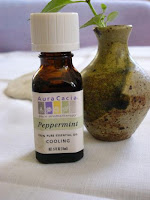Cabernet Sauvignon and the 99-Percent Brain

This New Year’s Eve, would you like a glass of Cabernet Sauvignon to prevent Alzheimer’s disease? Several months ago I suggested that this might be a good practice to stop the ravages of this disease. But was it questionable advice?
Researchers at New York’s Mount Sinai Hospital spiked the drinking water of several female mice with Cabernet Sauvignon for seven months. Another group was given just water. Both groups were then placed in a maze. They discovered that the Cabernet Sauvignon mice found their way out of the maze quicker than teetotaler mice. I couldn’t resist sending this news to wine lovers.
Now another study shows I’d better take another look at the effects of alcohol on the brain. Carol Ann Paul, a researcher at Wellesley College in Wellesley, Mass., reported to the American Academy of Neurology in Boston that a small amount of alcohol is good for the heart, but it decreases total brain volume.
Paul and her associates analyzed MRI brain scans on 1,839 patients ages 34 to 88. They were classified in categories as non-drinkers, former drinkers, low drinkers (one to seven drinks per week), moderate drinkers (eight to 14 drinks per week) and high drinkers (more than 14 drinks per week).
The result? Researchers found that the more alcohol people consume on a regular basis, the smaller their brain volume. Paul reports that brain volume decreased 0.25 percent for every increase in the drinking categories. This meant that for heavy drinkers who consumed 14 or more drinks a week, brain volume decreased 1.6 percent.
Brain shrinkage was greater in female than in male drinkers. And the largest change was in women in their 70s who were still heavy drinkers. This is not a surprise since women’s bodies react differently to alcohol. They absorb it faster. It’s for this reason that women are advised to drink less alcohol than men.
Dr. James Garbutt, professor of psychiatry at the University of North Carolina, says, “This study corroborates a building story about the detrimental effects of alcohol on the brain.”
This was hardly the news I wanted to hear, particularly on New Year’s Eve. Since I qualify as being a moderate drinker, I’m more than casually interested in this report. In fact, according to this study I’ve lost about 1 percent of my brain’s volume. This sounds like a small amount, but we also know that as we age we lose brain volume, so the loss starts to add up over the years.
But what effect has a loss of 1 percent of brain volume have on one’s intelligence? Neither Dr. Garbutt nor Carol Paul provides the answer to this question. So it leaves moderate drinkers in a bit of a quandary. Do you gamble on the Cabernet Sauvignon mice test that you’re smarter than teetotalers? Or do you agree with Carol Paul and worry about being left with a 99-percent brain?
For me, it’s an easy decision. I’m still going to enjoy a cocktail at the end of the day and on New Year’s Eve a glass of Cabernet Sauvignon. There are over 20 world studies that show moderate drinkers live longer than teetotalers or excessive drinkers.
Alcohol oils the blood, increases good cholesterol, and dilates arteries, making a fatal blood clot less likely. Let’s also not forget the calming effect of alcohol after the turmoil of the day. Besides, the more I see of pharmaceutical prescriptions and their complications, the more I’m convinced that the therapeutic effects of alcohol in moderation are hard to beat.
But I’ll continue to drink alcohol just as porcupines make love: very, very carefully. The last thing I need while writing this column is a decrease in the size of my brain. In fact, this column may provide ready ammunition to those who believe I’m already afflicted with cerebral atrophy. Due to past columns questioning the value of mammography and fluoridation of water, there are many who proclaim me a fraud or who urge editors to “Fire the idiot!”
So on this New Year’s Eve, my thanks to editors who haven’t done so yet. And to all readers, I wish the best for 2009.
Dr. Gifford-Jones is a medical journalist with a private medical practice in Toronto.
Dr. Gifford-Jones’s Web site
Last Updated
Dec 28, 2008
























